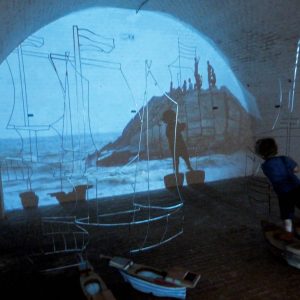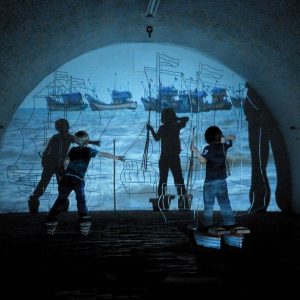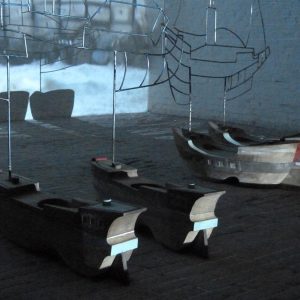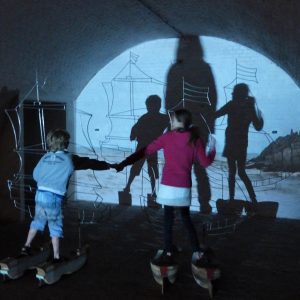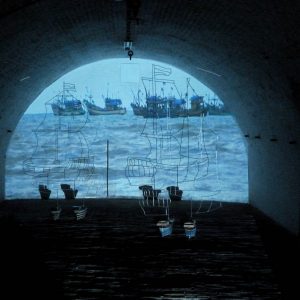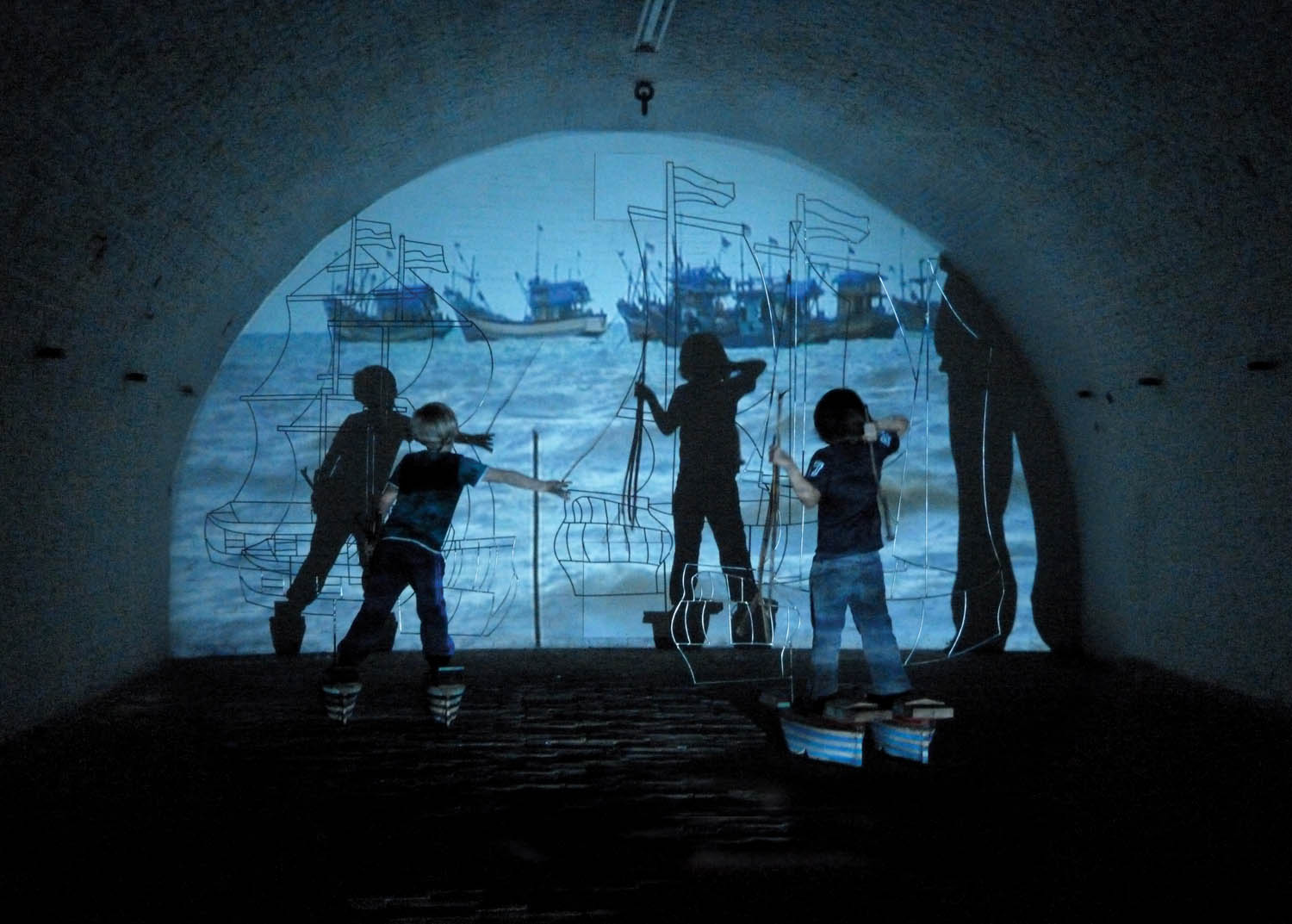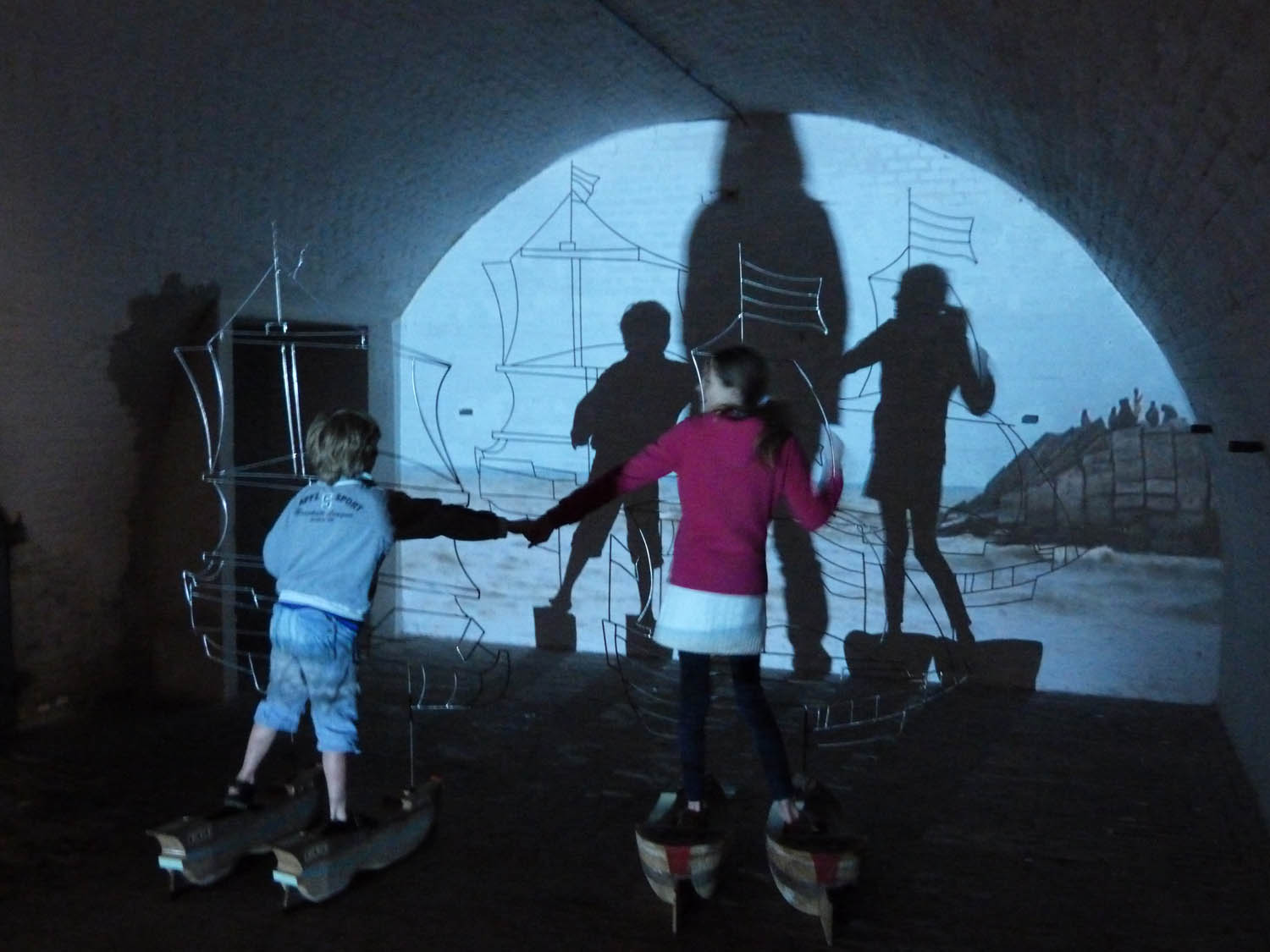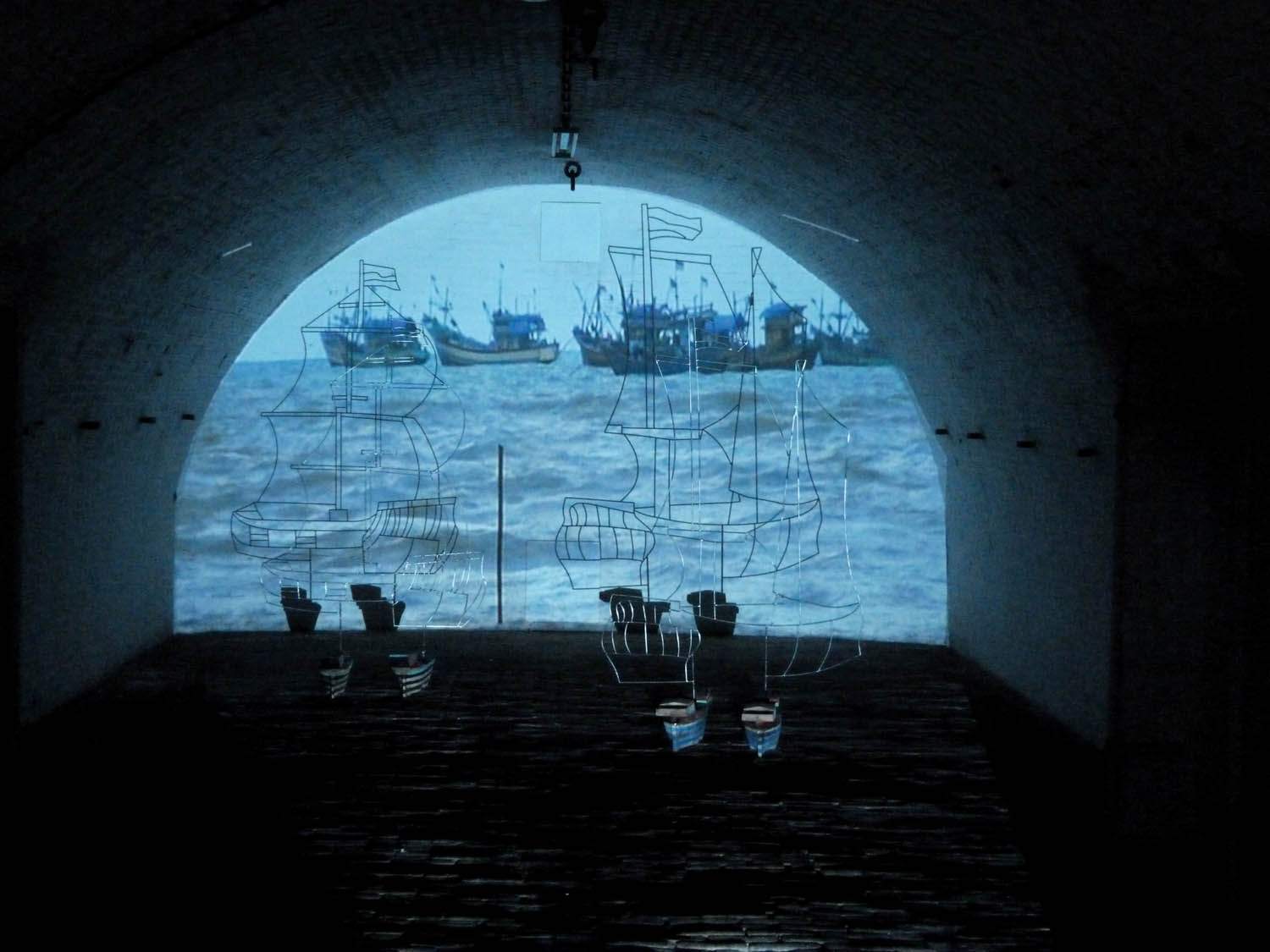In collaboration with Nindityo Adipurnomo
We created an participatory installation with the idea for children to think about the people who had left their land and families behind. Try to imagine how it would be, to travel to the unknown by boat, crossing dangerous seas.
What would it be like to reach a new land full of discoveries and uncertainties? In a video projection of the Java Sea, children can step onto wooden shoes – like the Dutch klompen – in the shape of boats, and ‘sail’ towards the horizon, accompanied by the sounds of heavy waves.
This work and some other works developed in 2011 were inspired by the Peranakan culture. The Chinese that started to settle since the 15th century in Indonesia (as well as what would become Singapore, and Malaysia) assimilated with the local cultures, intermarried with local women while keeping strong ties with their own culture. However, the Peranakans in Indonesia created a specific culture, which is more than adding individual elements of the three main ethnicities – Chinese, Indonesian, and Dutch.
Generations of Paranakans went through different, often difficult, political situations in Indonesia. What does Peranakan and its local heritage mean in this global era in which Peranakan culture is declining? Retaining ethnicity could be interpreted as ‘claiming’ and legitimizing an identity. We are interested in the Peranakans, because we see them as unique. For us the strength of Peranakan is the ‘search for the better’, in which people used their ethnicity and authenticity as a starting point to develop and prosper.
